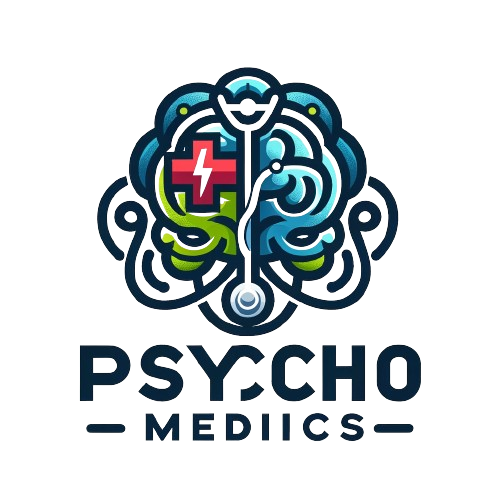Dimethyltryptamine (DMT), a naturally occurring psychedelic compound, has been at the forefront of discussions in both spiritual and scientific communities due to its unique and powerful effects on human consciousness. This compound, known for its role in inducing profound psychedelic experiences, has sparked interest in exploring the depths of the human psyche. DMT is not only a subject of intrigue for its psychoactive properties but also for its presence in nature, including its mysterious role in the human body.
Meditation, a practice as ancient as civilization itself, has been revered across cultures for its ability to cultivate mental clarity, emotional stability, and a deeper connection with the self. The integration of meditation with DMT use, referred to as DMT meditation, presents a fascinating intersection of traditional spiritual practices and contemporary psychedelic exploration. This hybrid practice is said to offer a unique pathway to personal insight, spiritual enlightenment, and transformative experiences.
DMT meditation has become a topic of considerable interest for those seeking a deeper understanding of their consciousness. It combines the introspective and tranquil discipline of meditation with the potent psychoactive effects of DMT. This practice challenges our conventional understanding of consciousness and reality, taking practitioners on what many describe as a profound and life-altering journey.
The surge in popularity of DMT meditation also raises important questions about the nature of consciousness, the potential therapeutic benefits of psychedelics, and the ethical considerations surrounding their use. In this article, we will explore the complex world of DMT meditation, its practices, experiences, and the ongoing discussions surrounding its impact on the human mind and spirit.
What is DMT?
Dimethyltryptamine, commonly known as DMT, is a naturally occurring psychedelic compound that has captivated the scientific, spiritual, and philosophical communities due to its unique and profound effects on human consciousness. This compound is part of the tryptamine family, which includes other well-known substances like psilocybin (found in magic mushrooms) and LSD.
Natural Occurrence and Traditional Use
DMT is found in several plants and animals, suggesting an intriguing role in the natural world. It’s a key ingredient in ayahuasca, a sacred brew used for centuries by indigenous tribes in the Amazon basin for spiritual and healing purposes. The brew is made by combining DMT-containing plants with inhibitors that allow it to be orally active, leading to extended, profound psychedelic experiences.
DMT in the Human Body
Interestingly, DMT is also produced endogenously in the human body, although its exact function remains a mystery. It is found in trace amounts in the brain, and some theories suggest it plays a role in dreaming and near-death experiences. This has led to a plethora of philosophical and spiritual speculations about its role in consciousness and the human experience.
Psychedelic Effects
DMT is renowned for its potent psychedelic effects. When consumed, typically through inhalation, injection, or as part of ayahuasca, it rapidly induces a powerful altered state of consciousness. This state is often characterized by intense visual and auditory hallucinations, altered sense of time and space, and profound emotional and spiritual experiences. Users frequently report encounters with otherworldly entities or dimensions, profound insights, and feelings of interconnectedness with the universe. For further information on the legal status and scientific research regarding DMT, the United States National Institute on Drug Abuse (NIDA) provides comprehensive resources on their website.
Duration and Intensity
One of the distinctive features of DMT is the short duration of its effects when inhaled (typically 5 to 15 minutes), which is considerably brief compared to other psychedelics like LSD or psilocybin. However, these few minutes are often described as extremely intense and transformative.
Research and Scientific Interest
From a scientific perspective, DMT is a subject of ongoing research, particularly in the field of psychopharmacology. Researchers are exploring its potential therapeutic uses, including its effects on depression and anxiety, its impact on neuroplasticity, and its role in human consciousness. Despite its illegal status in many countries, the scientific interest in DMT continues to grow, driven by its potential to unlock new understandings of the human mind.
Meditation and Mindfulness
Meditation, a practice with ancient roots spanning various cultures and religions, is a method of training the mind much like fitness is a method of training the body. At its core, meditation is about cultivating awareness and attention.
Historical and Cultural Significance
Historically, meditation has been a cornerstone in spiritual traditions like Buddhism, Hinduism, and Taoism, but it’s also practiced in secular contexts for its mental and physical health benefits. Each tradition offers different meditation techniques, but most share a common goal: the achievement of inner peace and heightened awareness.
Types of Meditation
There are many forms of meditation, including:
- Mindfulness Meditation: Originating from Buddhist teachings, this involves paying attention to thoughts as they pass through the mind, without attachment or judgment.
- Concentration Meditation: This involves focusing on a single point, such as breathing, a phrase, or an object, to train attention and awareness.
- Transcendental Meditation: A form of silent mantra meditation, developed by Maharishi Mahesh Yogi, aimed at achieving a state of relaxed awareness.
- Loving-kindness Meditation (Metta): Focuses on developing an attitude of love and kindness toward everything, even sources of stress and enemies.
Health Benefits
Scientific research has validated many health benefits of meditation and mindfulness, including stress reduction, improved focus, reduced symptoms of anxiety and depression, and enhanced overall well-being. Mindfulness meditation, in particular, has been shown to alter the structure and function of the brain in ways that promote improved health and increased cognitive performance.
DMT Meditation: The Practice
DMT meditation is a unique and relatively new practice that combines the ancient art of meditation with the psychedelic experience induced by Dimethyltryptamine (DMT). This fusion creates a powerful and profound journey of the mind and spirit, offering deep introspection and potentially transformative experiences.
The Fusion of DMT and Meditation
DMT meditation involves the ingestion or inhalation of DMT in a controlled, meditative environment. The practice is often guided by experienced facilitators who ensure a safe and supportive setting. The idea is to use the altered state of consciousness induced by DMT to deepen the meditation experience, allowing individuals to explore the depths of their psyche in a new and profound way.
Setting and Preparation
The setting for DMT meditation is crucial. It usually takes place in a quiet, comfortable, and safe space, minimizing external distractions. Participants are often encouraged to set intentions for their journey, reflecting on what they hope to achieve or understand through the experience. This preparation can include mindfulness practices, setting a personal intention, or participating in group discussions about the process and expectations.
The Experience
During DMT meditation, participants typically lie down or sit in a comfortable position, often with their eyes closed. After consuming or inhaling DMT, they enter a psychedelic state that lasts from several minutes to an hour, depending on the method of ingestion. This state is characterized by intense visual and auditory hallucinations, a sense of traveling through different dimensions, profound emotional releases, and encounters with various entities or profound realizations.
Integration Process
An integral part of DMT meditation is the integration process that follows the psychedelic experience. This is a period of reflection where individuals process and make sense of their experiences. Facilitators or therapists may guide this process, helping to translate these profound experiences into meaningful insights or changes in one’s life.
Challenges and Considerations
DMT meditation is not without its challenges. The intensity of the experience can be overwhelming, and not all experiences are pleasant or easy to understand. It requires a level of psychological readiness and a supportive environment to ensure a safe and beneficial experience. Furthermore, the legality of DMT varies by region, making it inaccessible or illegal in many parts of the world.
Effects and Experiences
Users of DMT meditation report various effects, ranging from profound mystical experiences to intense emotional upheavals. Common descriptions include feelings of transcendence, encounters with otherworldly entities, and revisiting past memories. It’s crucial to note that these experiences are highly subjective and can vary widely among individuals.
Scientific Perspective
The scientific community is interested in the therapeutic potential of DMT, particularly in treating mental health issues like depression and PTSD. Research suggests that DMT could promote neuroplasticity and provide relief from psychological distress. However, studies are still in their infancy, and much remains to be understood about the long-term effects and safety of DMT use.
Legal and Safety Considerations
DMT is classified as a Schedule I controlled substance in many countries, making its use illegal. The legal risks, along with potential health hazards, make it crucial for individuals to approach DMT meditation with caution. Ensuring a safe setting and guidance from knowledgeable professionals is essential.
Conclusion
DMT meditation represents a convergence of ancient spiritual practices and modern psychedelic exploration. While anecdotal evidence suggests it can offer transformative experiences, it’s important to approach this practice with awareness of its legal status and potential risks. As research continues, the scientific understanding of DMT’s impact on the mind and consciousness will undoubtedly evolve, shedding more light on this intriguing practice.
FAQs
Q1: What is DMT Meditation?
- A1: DMT Meditation combines traditional meditation with the psychoactive effects of DMT (Dimethyltryptamine), aiming to deepen introspection and spiritual experiences.
Q2: Is DMT naturally occurring in the human body?
- A2: Yes, DMT is found in trace amounts in the human body, though its exact function is not fully understood.
Q3: How long do the effects of DMT last during meditation?
- A3: The duration varies but typically, inhaled DMT effects last between 5 to 15 minutes, whereas ayahuasca experiences can last several hours.
Q4: Is DMT Meditation legal?
- A4: The legality of DMT varies by country and region. In many places, DMT is classified as a controlled substance and is illegal to use.
Q5: Can DMT Meditation be dangerous?
- A5: As with any psychedelic experience, there are risks, particularly for individuals with certain mental health conditions. It’s important to approach DMT meditation with caution and under guidance.
Q6: What are common experiences reported during DMT Meditation?
- A6: Common experiences include intense visual and auditory hallucinations, encounters with entities, profound emotional insights, and feelings of interconnectedness.
Q7: Is DMT Meditation used for therapeutic purposes?
- A7: There is growing interest in the therapeutic potential of DMT, particularly in the treatment of mental health disorders, but research is still in its early stages.
Q8: How does one prepare for DMT Meditation?
- A8: Preparation often involves setting intentions, creating a comfortable and safe environment, and possibly guidance from experienced facilitators.
Q9: Can DMT Meditation lead to spiritual enlightenment?
- A9: While many report profound spiritual experiences, the concept of enlightenment is subjective and can vary greatly among individuals.
Q10: Are there any long-term effects of practicing DMT Meditation?
- A10: The long-term effects are not fully understood and can vary. Some individuals report lasting positive changes, while others may experience challenges.

Alex is a seasoned writer and researcher, specializing in psychedelic studies and mental health. Known for insightful and authoritative content, he combines extensive knowledge with a passion for exploring wellness and alternative therapies. Alex’s work is a trusted resource for readers delving into the world of mental well-being.


Leave a Reply